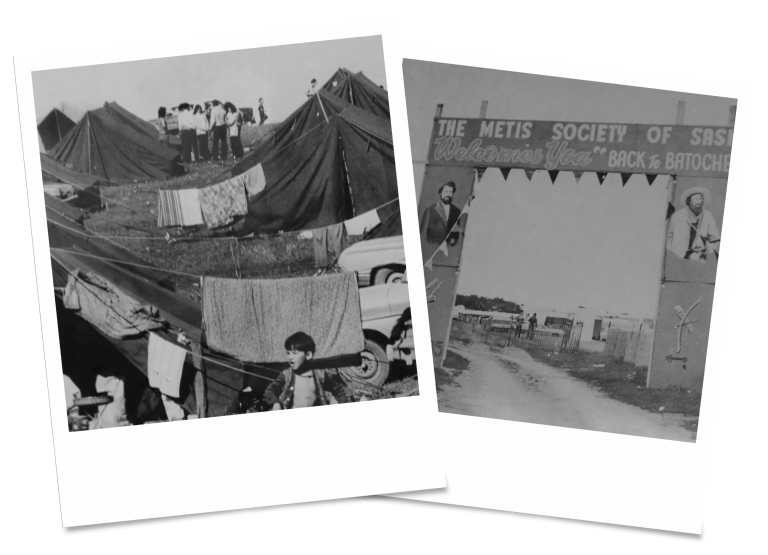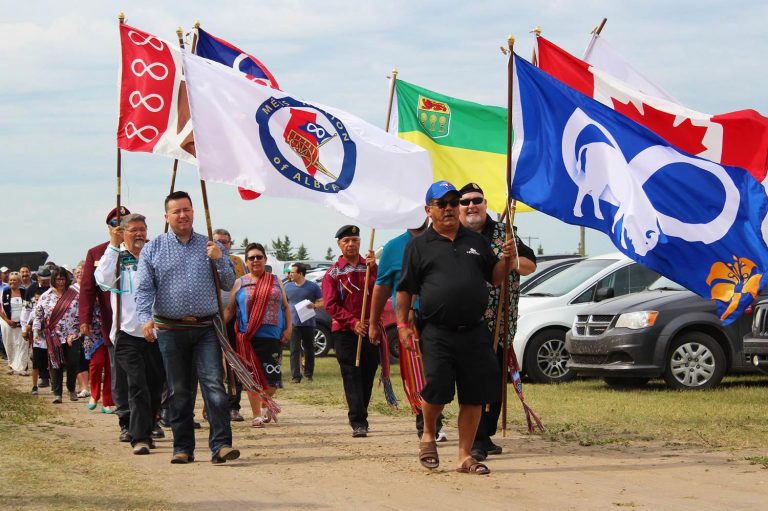Back to Batoche
Celebrating History
Back to Batoche – Our Place of Resistance and Revitalization
The Back to Batoche Festival, now known as Back to Batoche Days, began in 1970. This internationally recognized Métis cultural celebration welcomes participants from all over the world to learn the rich and resilient history of the Métis and the significant role we played in Canadian history.

Back to Batoche Days is located in Batoche, Saskatchewan, the historic homeland of the Métis. For over 50 years, the four-day event has been an important opportunity to share Métis culture, build relationships, honour our Métis veterans, and connect to the land where our Métis heroes fought in the 1885 Northwest Resistance.
This annual celebration, held on the national historic site of “The Battle of Batoche,” represents a movement toward reconciliation as approximately 10,000 people, Métis and non-Métis gather, over the course of the festive, to share in the celebration of our history, culture and language. Back to Batoche provides the opportunity to preserve and promote Métis culture through storytelling, fiddling, jigging, square dancing, traditional food, music, Métis artists, traditional land use teachings, voyageur games, chuck wagon racing, sports, contemporary games, and indigenous language. It also offers a space to reconnect with friends and family and develop new meaningful relationships.

The Sunday processional is an important tradition at Batoche, with Métis veterans leading the way to the cemetery where attendees take time to reflect on the resilience of our Métis ancestors.
Walk the Procession with Elder Norman Fleury as your guide:

Back to Batoche is a family friendly event and the age of participants varies from new parents and Elders to newborns and teens. Everyone is welcome to celebrate our history and learn about who we are today.
Elder Norman Fleury / Interview with Laurie Barkwell“Coming here and you see those young people. The little girl that was there was no older than three or four years old, that was displaying the best of her, her ability to do the jig and I said you know our culture has been shelved for a long time. We have laid it in shelves. It’s never been lost. It’s there. Now we are taking it back and giving ourselves that exposure internationally because here we got visitors from all over the world literally.”

